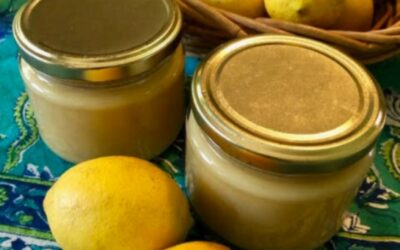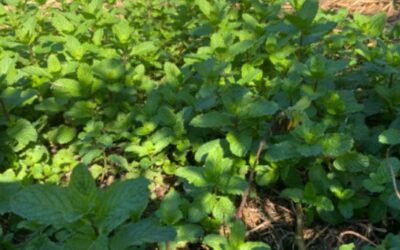
In spring and summer, many reptiles emerge to bask in the sun. During this time you should take precautions to minimise the chance of encountering snakes in your compost pile.
Maintaining a high level of biodiversity is important to all life on Earth, including humans, and snakes are an important part of that biodiversity. Without them, the numbers of prey species would increase to unnatural levels and the predators that eat snakes would struggle to find food.
Ecosystems are complex and diverse, with many levels and intricate relationships between organisms. Removing any level from an ecosystem disrupts a delicate balance that may have evolved over millions of years. These systems are comprised of a series of checks and balances between predator and prey, that balance the whole. The removal of the top predators in an ecosystem has a huge impact.
During the winter, snakes seek refuge under rocks and sometimes abandoned animal burrows. These winter hidey-holes are called hibernacula (singular: hibernaculum), allow the snakes to live safe and warm during the colder months. Snakes are cold-blooded or more properly known as ectothermic, therefore they rely on external sources to heat their bodies. As you can imagine, it would be nearly impossible for snakes to stay warm throughout most winter days. Incredibly, snakes intuitively know that they must find a cosy spot before they turn into a snake ice-block.
Hibernacula provides a safe place for snakes to lower their metabolism and be less active. This process is known as ‘brumation’ (as opposed to hibernation).
This talk of snakes may make you squeamish and give you goose bumps, but snakes aren’t the menacing creatures that we often see on TV. Most species in Australia are shy, elusive, and pose no threat to humans. You’ll often hear them dart through the underbrush before you see them, as they seek cover from us two-legged giants. If you’re lucky enough to get a close look, you might notice that many snake species have a dainty, elegant charm to them.
Snakes are not only an integral part of your backyard ecosystems, but wonderful garden helpers. To those of us whose garden is a labour of love, our nightmares are filled with mice and rats heedlessly munching away at our delicate greens. Snakes also enjoy eating rodents, snails, insect larvae, centipedes, and other invertebrates. Through their appetites, snakes help control pest populations in our backyards.
When you are piling up yard debris and food scraps for composting, you may start worrying that snakes may decide to make a home under that nice, shady canopy that you are building. Your concern is not without merit. Trust me. I recently had an experience of a snake in our compost bin and with some thought, I’ve come to the conclusion that dealing with the root of the issue is your best chance to prevent finding a surprise in your decomposing pile.
Does compost attract snakes? Compost can attract snakes as a protective shelter and as a food source. Piles of leaves and debris offer a welcoming canopy in which to hide and food scraps can attract rodents for the snakes to feed off. To prevent snakes in your compost, keep rodents out of your pile.
We have to remember that a snake requires both shelter and food for survival. At least one of these offerings is what will initially attract a snake but in order for them to stay, they are going to require both.
Our goal, then, is to interrupt the offerings and make our compost pile less attractive as a permanent settlement.
It’s important that we begin here because, although a snake may wander into your compost pile out of curiosity, it is the availability of food that will entice it to stay.
Snakes are carnivores and prey on small live animals, rodents are an excellent food source and when found in abundance can offer a strong incentive for a snake to stay.
As compost heats up, it can provide a source of warmth for snakes. They can curl up on a nice warm mat of decomposing leaves, grass clippings, or whatever organic matter you may have added in and just wait for dinner to arrive.
If we can eliminate rodents from our compost pile, we stand to make it a less inviting location to settle in for permanent residence.
And so, we need to figure out how to keep rats out of our compost.
But why would rats be in a compost bin?
Rats are opportunistic feeders. They will get into just about any digestible material they can find and that includes the food scraps that you are putting in your compost. The bottom line is this: once the rats come, snakes are not far behind.
Here’s the mistake that I made: My routine was to gather a day or two’s worth of kitchen scraps at a time and bring them to the compost pile at one time. I’d simply lift away a layer or two of the heap and drop the scraps into the centre. My logic was that this would help to keep the pile heating up.
I created a treasure hunt where the lucky rodent who found it had an endless supply of food. I learned some valuable lessons from this, add smaller portions of scraps at one time, spread, and mix the fresh kitchen waste throughout the pile. Turn compost heaps regularly to prevent rodents feeding and breeding in them, don’t put egg shells into the bin/heap (rodents love them), only put raw food scraps into a compost bin, not onto an open heap, and cover raw food scraps with other materials (e.g. grass clippings or a layer of soil).
If you want to keep snakes from making a home in your compost pile, starve out the rodents! Only add a reasonable amount of food waste at a time. The amount will depend on the size of your compost pile but stick with the tried-and-true rule of thumb: two parts dried browns (carbon) to one part greens (nitrogen).
Australia has around 140 species of land snake, and 32 recorded species of sea snakes. Some 100 Australian snakes are venomous, although only 12 are likely to inflict a wound that could kill you. Snakes contribute greatly to our biodiversity and ecosystem stability. Snakes play both the predator and prey role. They make for a healthy snack for hawks, eagles, kookaburras & more. They also help control pest populations, as we already learned. Snakes also act as ecosystem engineers where rodents eat plant seeds, then snakes eat the rodents. This makes snakes secondary seed dispersers, helping plants to find new places to grow. But snakes still experience some challenges. They face the repercussions of loss of habitat, habitat fragmentation, and loss of hibernacula sites. Without snake species, a piece of the ecosystem puzzle would be missing and there would be a ripple effect throughout the environment.
By Eve Ballard




0 Comments